Despite the fact that Pluto has lost its status as a planet, the interest of scientists in it hasn’t faded. Several unmanned spacecraft will explore its surface in the next decade, and we will undoubtedly learn a lot about it. Exploring Pluto may shed light on the mystery surrounding the origin of the Solar System.
Amazing facts about Pluto
- The total surface area of Pluto is approximately equal to the area of Russia.
- From the moment it was discovered to the moment it was demoted to dwarf planets, it didn’t have time to make a single revolution around the Sun.
- It’s the first in size and second in mass (second only to Eris) of all the dwarf planets.
- Pluto is the largest known object in the Kuiper belt.
- It has 5 moons: Charon, Styx, Nyx, Hydra, and Kerberos.
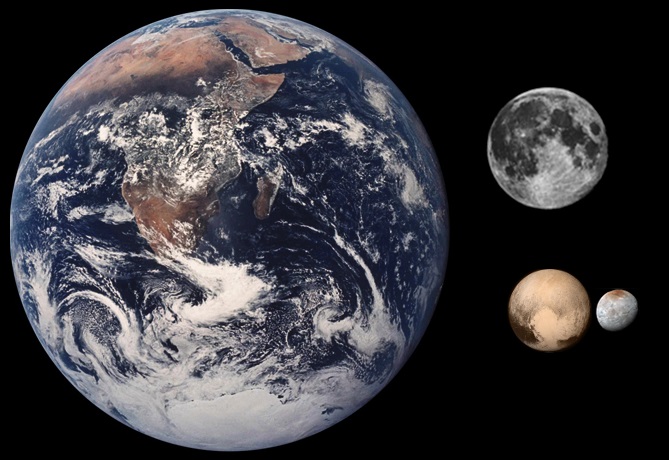
- Charon is half as big as Pluto. It is so large that the center of mass of the Pluto-Charon system lies outside of Pluto itself, which is the main reason for its classification as a dwarf planet.
- Pluto and Charon are always facing each other on the same side because their rotation is synchronized.
- All of its satellites except Charon were discovered by the Hubble Space Telescope.
- The chemical element plutonium was named after this celestial body.
- Seven moons in the Solar System surpass Pluto in size and mass both.
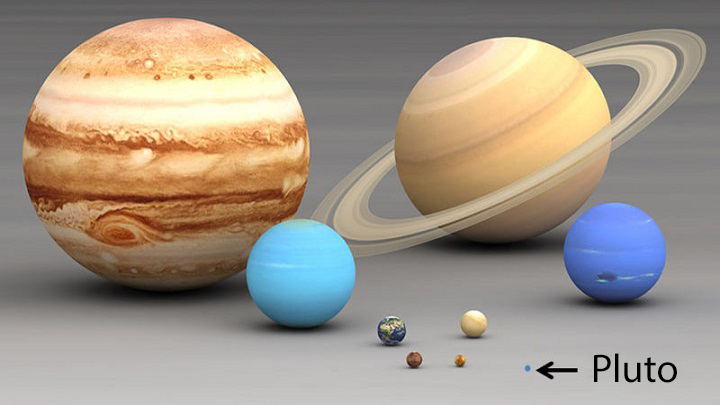
- It has a very rarefied atmosphere, reaching an altitude of 125 miles (200 km) above the surface.
- The first detailed photos of Pluto’s surface were obtained in 2015 thanks to the automatic interplanetary research station “New Horizons”.
- When the “New Horizons” probe was going to the outer Solar System, it carried a capsule with part of the ashes of American astronomer Clyde Tombaugh, the discoverer of this dwarf planet, among other things.
- By mass, Pluto is 6 times less than our Moon, and almost 480 times less than Earth.
- It has ice polar caps, like Mars and Earth.
- A number of astronomers suggest considering Pluto and Charon as a binary planetary system since they orbit around a common center of mass. The debate on this topic hasn’t subsided for years in the scientific community.
- Pluto receives very little sunlight. For an observer on its surface, the black sky and stars would be visible even during the daytime.
- The gravity on its surface is almost 16 times less than on Earth.
- The temperature here ranges from -351 to -387 °F (from -213 to -233 °C). Despite this, Pluto isn’t the coldest celestial body in the Solar System.
- The atmospheric pressure on its surface is about 101,000 times less than on Earth.
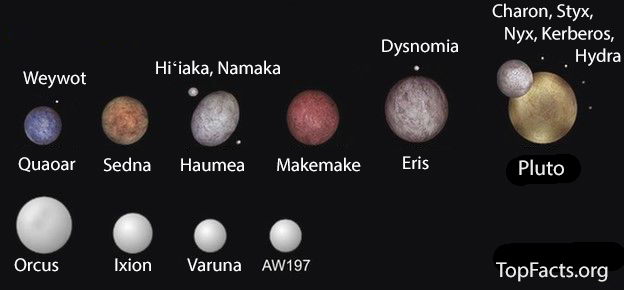
- A year on Pluto lasts about 248 standard years.
- Ice deposits on its surface are millions of years old. In such conditions, ice takes a special aggregate state, and its strength is comparable to steel.
- The name for this dwarf planet was chosen through an open competition. The name “Pluto” was suggested by 11-year-old Englishwoman Venetia Burney.
- Pluto ranks 10th in mass among all the celestial bodies orbiting the Sun.
- All the planets of the Solar System revolve around the star in approximately the same plane. But the orbit of Pluto is deviated from this plane by 17°.
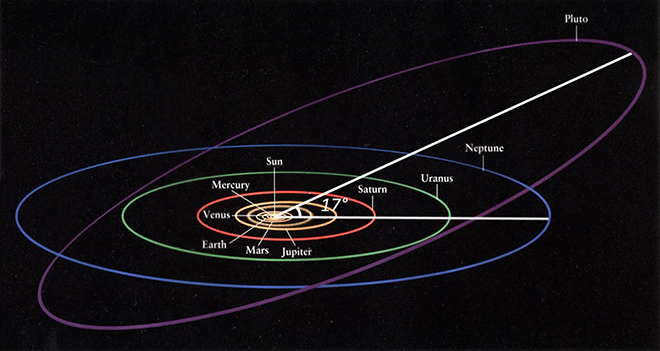
- If it were closer to the Sun, it would have a comet-like tail as Mercury does.
- For an observer on the Plutonian surface, the Sun rises in the West and sets in the East.
- Pluto is closer to the Sun than Neptune from time to time.
- Pluto receives about 1,600 times less sunlight than Earth does.
- It takes about five hours for sunrays to travel from the Sun to Pluto.
- Apparently, there is water on there. After studying the data obtained by “New Horizons”, scientists concluded that there may be a liquid ocean under its surface, consisting mainly of water and ammonia. The presence of ice in solid form on Pluto has already been established reliably.
- Sputnik Planitia on Pluto is the largest object on this celestial body, a huge depression that occupies about 5% of its surface. It was named after the first artificial satellite launched into space by the Soviet Union in 1957.
- The highest Plutonian mountains reach a height of about 10,000 miles (3 km) above the average surface level.
- In the US, Illinois, Pluto is still officially considered a planet. Because Pluto was the only planet discovered by an American scientist, Clyde Tombaugh who was born in Illinois.
- Charon may have cryovolcanoes and ice geysers.
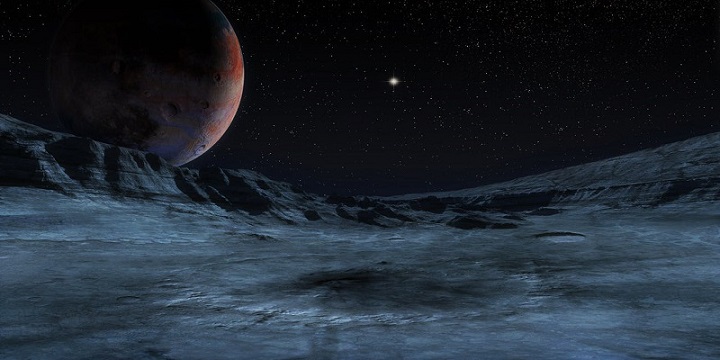
- The first spacecraft to visit the vicinity of Pluto was the “New Horizons” probe in 2015. It took 10 years to get there.
- There’s snow on the tops of the Plutonian mountains. It’s made up not of frozen water, but mostly of methane.
- Moving hills have been found on Pluto. This mystery hasn’t been solved yet, but most scientists believe that these hills, reaching miles in length and hundreds of feet in height, gradually move over the frozen surface under the influence of convective forces.
- Pluto radiates in the x-ray range. This radiation occurs when gas molecules coming out of its interior interact with the solar wind.
- Charon is slowly absorbing the rarefied Plutonian atmosphere. Its gravity is strong enough to do that.



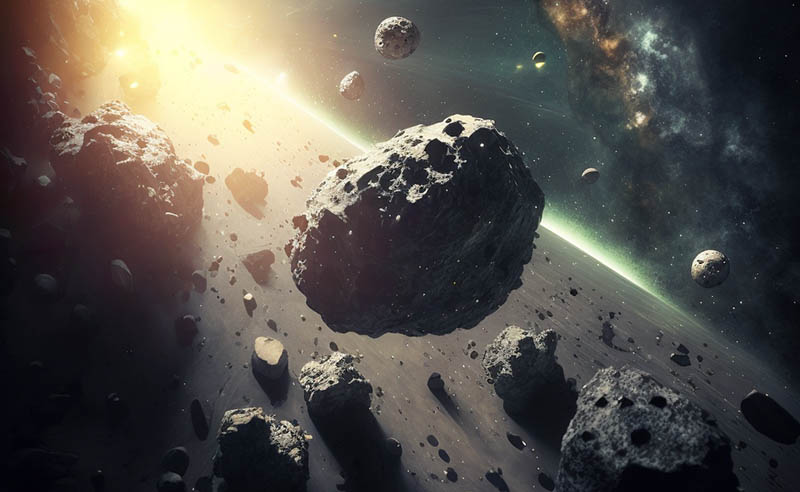
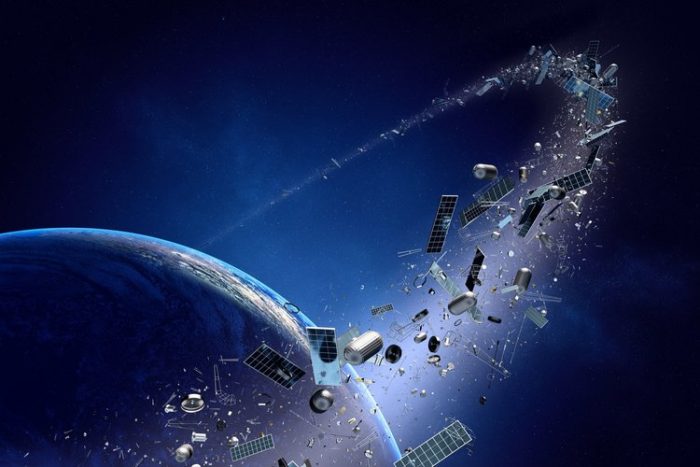
Pingback: 25 удивительных фактов о планете Марс | Позитив